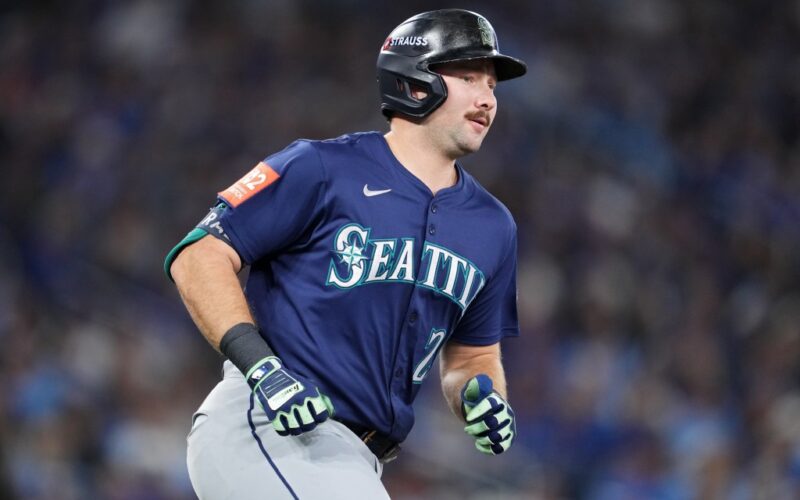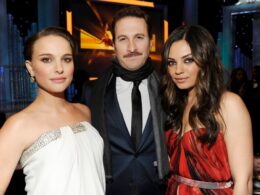This is not an article advocating for Seattle’s Cal Raleigh to win the American League MVP.
As the Daily News outlined this week, the Yankees’ Aaron Judge boasts a significant statistical advantage, including by hitting the most home runs ever (53) by a batting champion (.331) and by recording an MLB-best 1.145 OPS that was 197 points higher than Raleigh’s .948.
That’s why Judge is considered the favorite.
But this is an article pointing out that Raleigh’s case for AL MVP is a legitimate one, which is why most expect the vote to be extremely close when the winner is revealed on Thursday night.
Although his offensive numbers paled in comparison to that of Judge, Raleigh delivered a historic season at the plate in his own right.
Raleigh’s MLB-leading 60 home runs were the most ever in a single season by a primary catcher, by a switch-hitter, and by a Seattle Mariner. He topped Salvador Perez (48), Mickey Mantle (54), and Ken Griffey Jr. (56), respectively, to set those records.
Raleigh also led the AL with 125 RBI.
“We’ve said this all before, but it just continues,” Mariners manager Dan Wilson said in September. “And it continues at a historic level. To do what he’s doing, and to do it behind the plate, as often as he’s back there, again, it’s just kind of unfathomable.”
But — like the Yankee captain Judge — Raleigh’s value cannot be described by numbers alone.
As the Mariners’ workhorse catcher and the anchor of their lineup, Raleigh affects both sides of the baseball diamond as much as any player not named Shohei Ohtani.
Raleigh started more games at catcher (119) and caught more innings (1072.0) than anyone else in the AL.
That meant more opportunities for exposure to foul tips, home-plate collisions, bumps, bruises and the general wear and tear of spending nine innings on one knee night after night.
“Catchers usually are pretty tired at this point in the year,” Raleigh told The Athletic in September. “But you could say the same thing for everybody.”
But not everybody could say that, in between the grueling physical and mental demands of playing catcher, they were counted on to deliver at the plate as the focal point of their team’s offense.
Raleigh was in charge of a Mariners pitching staff whose 3.87 ERA ranked sixth in the AL.
It’s a job that requires scouring over scouting reports, pregame meetings with pitchers, bullpen warmups, mound visits, calling pitches and everything else that goes into navigating an opposing lineup.
Raleigh was so busy with prep work that he was generally unavailable to the media before the first game of a given series, yet he was so in-demand that he would hold scrums for reporters before the second game.
And Raleigh was so central to the Mariners’ lineup that he typically served as the designated hitter on the days he didn’t catch. He totaled 159 appearances, including 157 starts, as a catcher, DH or pitch-hitter — the most of any primary catcher.
“It’s the mystery bruise game,” Stephen Vogt, a former MLB catcher and now the Cleveland Guardians manager, told The Athletic of a catcher’s grind. “You wake up and you can’t remember where it came from. Your legs are jello. Your body just aches. It hurts.”
In 2024, Raleigh won the platinum glove as the AL’s best fielder at any position.
His defensive metrics were down in 2025, yet he still recorded seven defensive runs saved to rank fifth among AL catchers, while his pitch framing placed within the baseball’s 93rd percentile, according to Statcast metrics.
Raleigh’s dual impacts at and behind the plate are why he won 2025 Sporting News Player of the Year, an award voted on by the players.
“Being a catcher is the heart (of the argument),” Atlanta Braves third baseman Austin Riley told The Sporting News. “I mean, you’re trying to essentially keep a group of pitchers from going insane and keeping them light calling a game. They’re all different.
“And you’re getting beat up back there. I mean, you’re constantly taking balls off to the thigh, inner thigh, off the shoulder from foul balls, and then trying to go hit.”
We’ll find out Thursday whether the voting members of the Baseball Writers’ Association of America (BBWAA), who decide the MVP winners, felt the same way.
Judge posted more wins above replacement (WAR) to Raleigh, according to both FanGraphs (10.1 to 9.1) and Baseball Reference (9.7 to 7.4). The Baseball Reference model does not, however, account for pitch framing, which is a big part of Raleigh’s résumé.
The gap between Judge’s OPS and Raleigh’s, meanwhile, was bigger than that of Raleigh and Toronto’s Addison Barger, whose .755 OPS ranked 39th among AL hitters.
But Judge has won two of the past three AL MVP Awards, including last year’s, which could give Raleigh an edge in terms of narrative.
Whether all of that is enough to overcome another superhuman season by Judge is the biggest storyline going into Thursday night.








